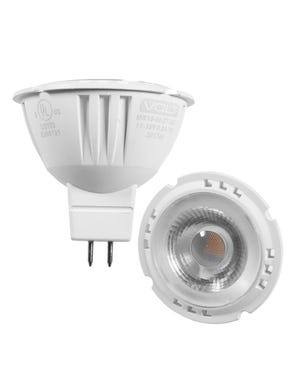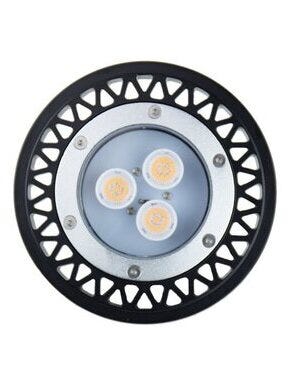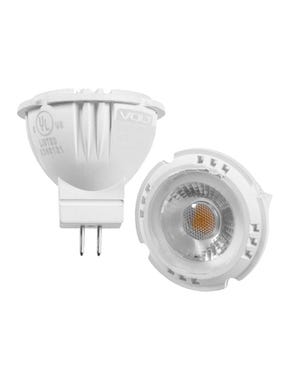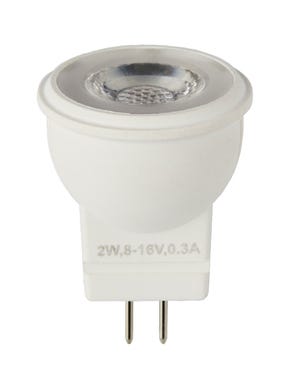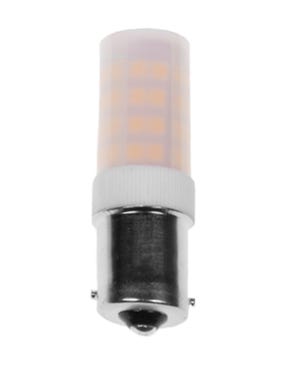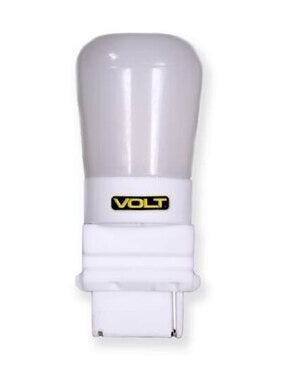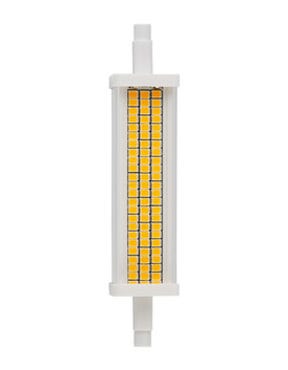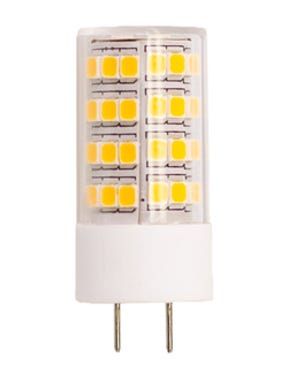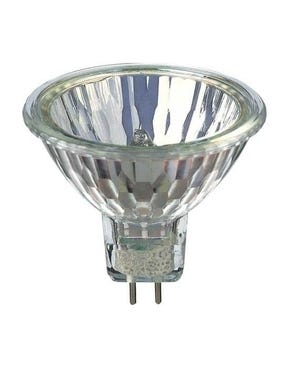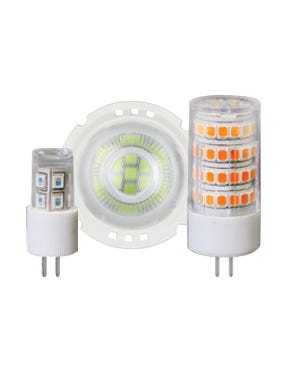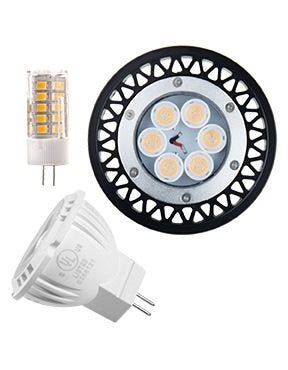Outdoor Light Bulbs
About 12V LED Light Bulbs for Landscape Lighting
A halogen bulb has a tungsten filament; running electricity through it produces a lot of heat, and also some light. By contrast, LED light bulbs utilize solid-state light emitting diode technology. Electricity also travels through LEDs and they also glow, but they are not simple wires; they are compounds pressed together in layered semiconductor chips.
Compared to halogen or incandescent bulbs, LED bulbs are:
- Much cooler and therefore much less of a fire hazard.
- Far more environmentally friendly because the same light output (lumens) can be produced with significantly less energy consumption (wattage). Specifically, 80%-90% of the energy consumed by LEDs is converted to light vs. 10%-20% for incandescent bulbs.
- Much less expensive over the long term, again because far less energy is required to produce the same amount of light. If you swapped out all of the bulbs in a landscape lighting system, you'd save thousands of dollars over their lifetime. Use our LED energy savings calculator to determine the savings for your system.
- Much longer lasting; a quality LED bulb will have a lifespan of 40,000-60,000 hours, which equals about 15-20 years of use in your landscape lighting system. Halogen bulbs often last just 2000-5000 hours.
- More durable, because they have no filaments and therefore can withstand heavy vibrations.
Plus, the light projected from VOLT® LED bulbs is indistinguishable from halogen bulbs.
When shopping for VOLT® LED bulbs, notice that we always call out the halogen equivalents. For example, our 7W LED MR16 bulb is the equivalent of a 50 watt halogen bulb. This is because LED bulbs require far less energy use (wattage) to produce the same light output (lumens) as old halogen bulbs.
For many years, bulbs were sold based on wattage, and we all came to understand roughly how bright bulbs of different wattages would be. Those days are now over, because LED bulbs are extremely efficient. To understand how bright a bulb is, don't look at the wattage - instead focus on lumens, which are a measure of visible light output. The higher the lumens, the more light is produced.
Here's another reason not to correlate wattage with brightness: luminous efficacy (lumens per watt) varies greatly from one manufacturer to another. So, if you want to know how bright a bulb will be, look at the lumen number on the Lighting Facts label found on all new LED bulb packages.
Color temperature refers to a white light's yellowish or bluish tint. On the Kelvin color temperature scale, high color temperatures are bluish (which we perceive as "cool") while low color temperatures are yellowish (which we perceive as "warm"). Which you should choose depends on your application and your personal preference.
- Very Warm White (2200K). This is the lowest possible color temperature for white light; any lower is yellow light. Also referred to as candlelight, this is used for very romantic, low key settings such as around outdoor fireplaces and hot tubs. It is also similar to High-Pressure Sodium (HPS) commonly used for street lights, and less commonly for 120V moonlighting.
- Warm White (2700K). Similar to halogen-type landscape lighting, it is the most common color temperature for landscape lighting. Psychologically, it is thought to be more welcoming and soothing compared to higher color temperatures.
- Warm or Natural White (3000K). Noticeably cooler than 2700K, some landscape lighting pros prefer this temperature. It gives a more modern look and tends to accentuate greens and blues in vegetation.
- Cool White (4000K). Quite bluish compared to 2700K, this is sometimes used to illuminate blue vegetation (such as blue spruce). It is also used to simulate moonlight, which is 4200K.
Beam spread or beam angle refers to the spread of light from the luminaire. When choosing a bulb, you'll select the beam spread that's appropriate for the task at hand - for example, if you want to narrowly highlight one specific element in your landscape (like a flag) or illuminate a wide area (like a tree canopy). Sometimes the beam spread is fixed based on the fixture's unique shape, as it is with area lighting.
It's easy! Before adding a lamp-ready fixture to your cart, you'll be prompted to select a bulb. Follow the simple guide to select the best light bulb for your specific needs. We also provide an in-depth landscape bulb guide for more information. And of course, if you have questions, just give us a call (813-978-3700). We're happy to help!

